Long before streaming services and DVR allowed us to skip through advertising, TV commercials were an unavoidable—and often delightful—part of the viewing experience. The 1970s in particular gave us some of the most memorable advertising moments in television history, creating catchphrases and jingles that many of us can still recite verbatim decades later. These weren’t just commercials; they were cultural touchstones that brought Americans together around the warm glow of the television set, giving us shared references that continue to resonate today.
1. Mean Joe Greene for Coca-Cola (1979)
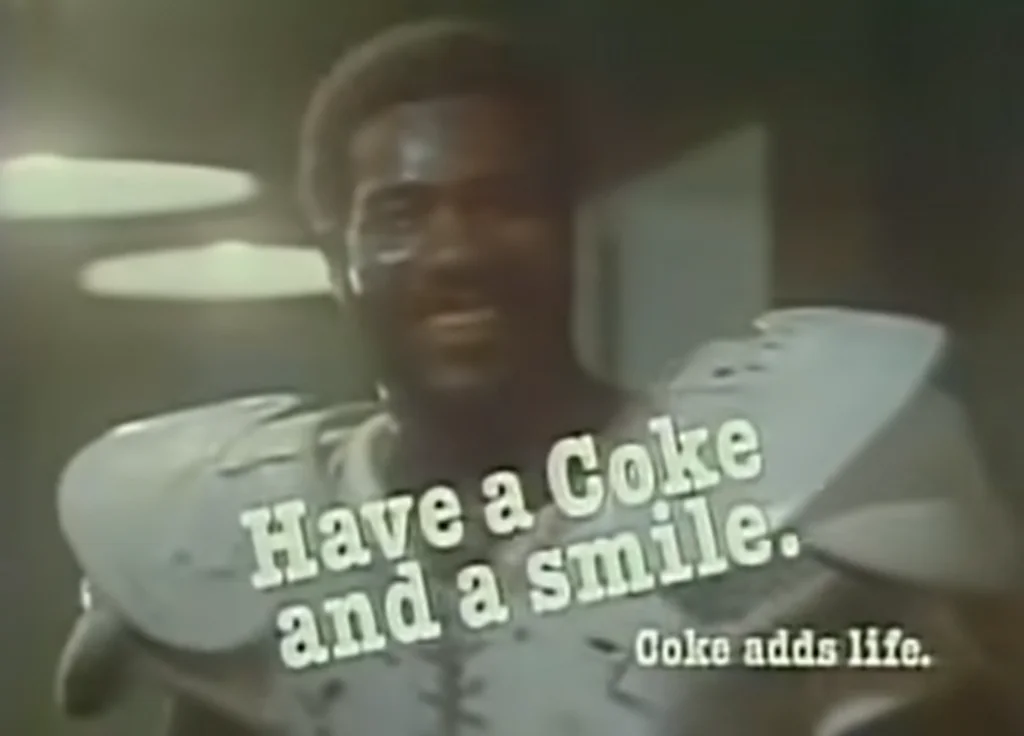
This iconic commercial shows Pittsburgh Steelers defensive tackle “Mean” Joe Greene limping down a stadium tunnel after a tough game when a young fan offers him a Coca-Cola. After initially rebuffing the boy, Greene accepts the drink, chugs it down, and then famously turns back to toss the kid his game jersey with the unforgettable line: “Hey kid, catch!” The commercial so perfectly captured the emotional connection between sports heroes and their young fans that it won a Clio Award and was later selected by TV Guide as one of the greatest commercials of all time. Pro Football Hall of Fame has a place of honor celebrating Greene’s athletic career that put a face to this refreshing beverage.
The “Hey kid, catch!” spot aired during Super Bowl XIV in 1980 but was filmed in 1979, making it a quintessential ’70s advertising moment that showcased how a simple human connection could transcend the product itself. The commercial was so successful that Coca-Cola created versions in other countries with local sports stars, and it even inspired a 2011 Downy Unstopables parody featuring Amy Sedaris and NFL player Ickey Woods. The 60-second spot exemplifies everything a great commercial should be: memorable, emotional, and so effective that decades later, most Americans over 40 can still describe it in detail despite not having seen it for years.
2. Life Cereal’s “Mikey Likes It!” (1972)
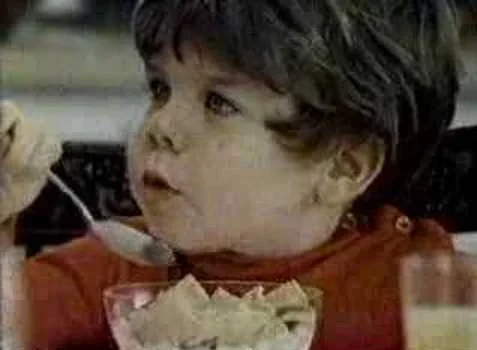
“He won’t eat it. He hates everything,” says one skeptical brother about the notoriously picky eater Mikey, as two siblings debate whether their younger brother will try a bowl of Life cereal. What follows is advertising magic as the brothers push the cereal toward Mikey, who, to their astonishment, devours it enthusiastically, prompting the famous exclamation: “He likes it! Hey Mikey!” This charming scenario of sibling dynamics resonated so strongly with American families that the commercial ran continuously for an astounding 12 years. According to IMDb, the actor is enjoying life with a family of his own now.
The three-year-old actor John Gilchrist became one of advertising’s most recognizable child stars, and the phrase “Mikey likes it!” entered the American lexicon as shorthand for unexpected approval. Despite urban legends that later claimed the actor died from mixing Pop Rocks and soda (completely untrue—Gilchrist grew up healthy and worked in media), the commercial’s legacy has endured as a perfect snapshot of ’70s childhood and family breakfast dynamics. The simplicity of the concept, the authentic performance of the children, and the memorable tagline created advertising magic that Quaker Oats has attempted to recapture multiple times over the decades, proving that sometimes lightning really does strike in the world of television advertising.
3. Alka-Seltzer’s “I Can’t Believe I Ate The Whole Thing” (1972)
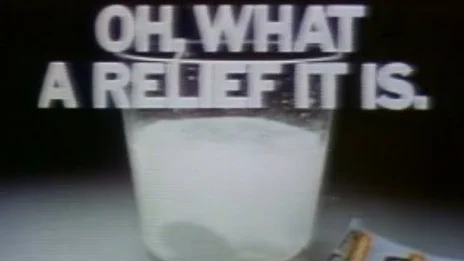
Few commercials have contributed a phrase to the American vernacular as successfully as this Alka-Seltzer gem featuring actor Milt Moss as a man suffering from indigestion after overindulging. The spot shows him sitting on the edge of a bed in rumpled pajamas, looking miserable while his wife reminds him that she warned him not to eat so much. His plaintive response—”I can’t believe I ate the whole thing”—became an instant catchphrase that Americans still use today when feeling the effects of a too-large meal. WebMD goes into the finer details of how this miracle substance works.
The commercial’s genius lay in its relatable simplicity and the perfect casting of Moss, whose hangdog expression and delivery captured the universal experience of dining regret. The fizzing Alka-Seltzer tablets dropping into water became an iconic visual paired with their famous “plop, plop, fizz, fizz, oh what a relief it is” jingle, creating a multi-sensory advertising experience that was impossible to forget. The campaign was so successful that Alka-Seltzer revisited the concept in 2005 with a modernized version, but for most Americans, the original remains burned into our collective memory as the perfect encapsulation of post-feast discomfort.
4. Burger King’s “Have It Your Way” (1974)
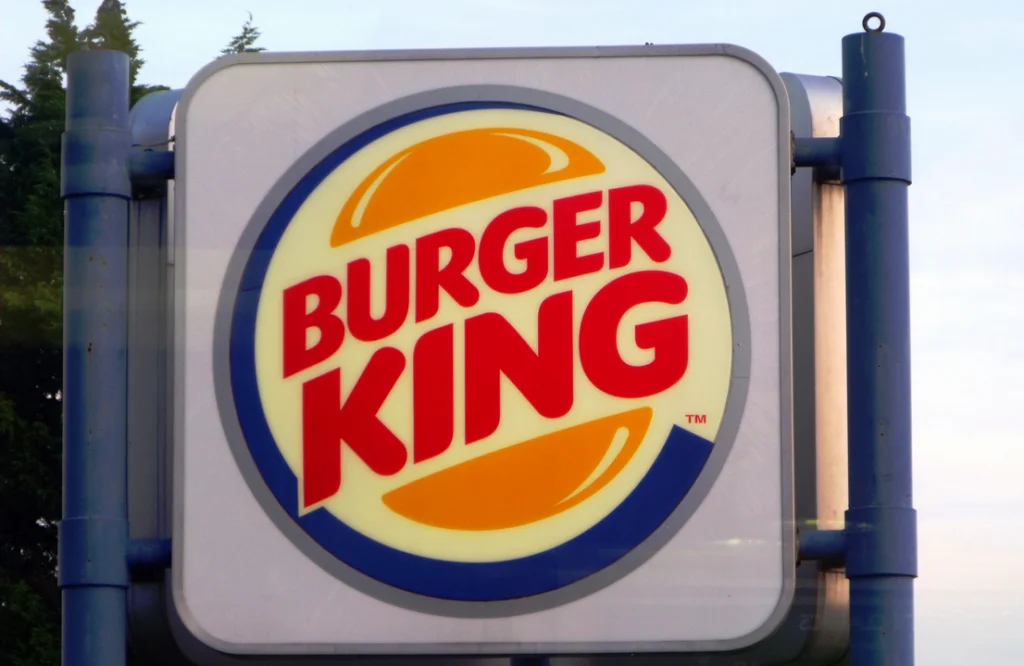
“Hold the pickles, hold the lettuce, special orders don’t upset us…” began the catchy jingle that revolutionized how Americans thought about fast food customization. The “Have It Your Way” campaign directly challenged McDonald’s standardized approach to burger-making, positioning Burger King as the flexible alternative where customers could customize their Whoppers without causing chaos or delays. The commercials featured cheerful Burger King employees happily accommodating specific customer requests, all while the infectious jingle reinforced the message of personalization.
The campaign was a direct response to McDonald’s efficiency-focused system that discouraged special orders, cleverly exploiting a competitive weakness while establishing a powerful brand differentiator. The jingle was so catchy that many Americans who grew up in the ’70s can still sing it note for note today, complete with the “Have it your way, have it your way…” chorus that embedded itself in the national consciousness. Though Burger King has revisited and updated its slogan multiple times over the decades (including the recent “You Rule” campaign that references the classic), the original “Have It Your Way” remains the chain’s defining advertising moment—a perfect marriage of strategic positioning and memorable music.
5. Enjoli’s “24-Hour Woman” (1978)
“I can bring home the bacon, fry it up in a pan, and never, never, never let you forget you’re a man…” sang actress Kelly Garrett in this fragrance commercial that perfectly captured the conflicted gender politics of the late 1970s. The spot showed a woman transitioning from professional businesswoman to home cook to seductive wife, all while spraying herself with the “8-hour perfume for the 24-hour woman.” While modern viewers might cringe at the commercial’s implication that women should excel in the workplace while maintaining full domestic and romantic responsibilities, the ad struck a chord with its target audience when it first aired.
The jingle, set to the tune of “I’m a Woman” (popularized by Peggy Lee), became one of the most recognizable commercial songs of the decade, representing both the possibilities and contradictions of women’s changing roles in American society. The Enjoli woman became a cultural touchstone—either aspirational or problematic, depending on one’s perspective—but undeniably memorable for its catchy presentation of the “superwoman” ideal that many women felt pressured to embody. Though the fragrance itself has faded into obscurity, the commercial remains a fascinating time capsule of a moment when advertisers were grappling with how to market to the newly empowered working woman.
6. Oscar Mayer’s “My Bologna Has a First Name” (1973)
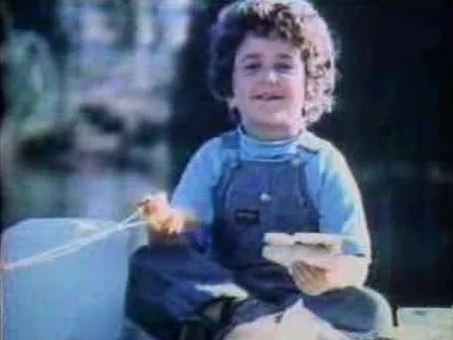
A freckle-faced boy fishing on a dock with his bologna sandwich introduced millions of Americans to a jingle they would never forget: “My bologna has a first name, it’s O-S-C-A-R. My bologna has a second name, it’s M-A-Y-E-R…” This charming commercial featuring four-year-old Andy Lambros created an advertising earworm so effective that many people who watched television in the 1970s can still spell the brand name perfectly today, despite never having written it down themselves.
The commercial tapped into childhood innocence while cleverly solving a marketing problem: helping consumers correctly spell and pronounce the brand name. The campaign was so successful that Oscar Mayer followed it with equally memorable commercials, including the famous “I wish I were an Oscar Mayer wiener” spot, creating a cohesive brand identity through music that spanned generations. The fishing dock commercial received a nostalgic update in the 2000s when a grown-up Andy Lambros appeared with his own son, proving that when advertising creates an authentic emotional connection, its impact can last for decades—and even be passed down to the next generation.
7. Calgon’s “Ancient Chinese Secret” (1977)
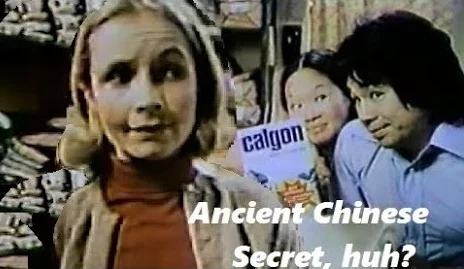
“Ancient Chinese secret, huh?” asks a curious customer in a laundromat, questioning how the clothes get so clean. The Chinese-American proprietor begins to explain about Calgon water softener when his wife interrupts from the back room: “My husband, some hotshot! Ancient Chinese secret, huh?” before revealing that Calgon is their actual secret. This commercial became famous not just for its catchphrase but for its somewhat progressive (for the time) portrayal of an Asian-American couple running their own business, though modern viewers would certainly note the stereotypical elements.
The commercial’s success lay in its perfect comedic timing and the wife’s sassy line delivery, which made the phrase “Ancient Chinese secret, huh?” a widely repeated punchline throughout the late ’70s and beyond. The spot effectively communicated Calgon’s product benefit—that hard water prevents detergent from working properly—through a memorable scenario that stuck with viewers far longer than a straightforward product demonstration would have. Though the cultural representation aspects of the commercial have not aged particularly well, the catchphrase remains instantly recognizable to anyone who watched television during this era, demonstrating how effective advertising can lodge itself permanently in the collective consciousness.
8. FedEx’s “Fast-Talking Man” (1981)
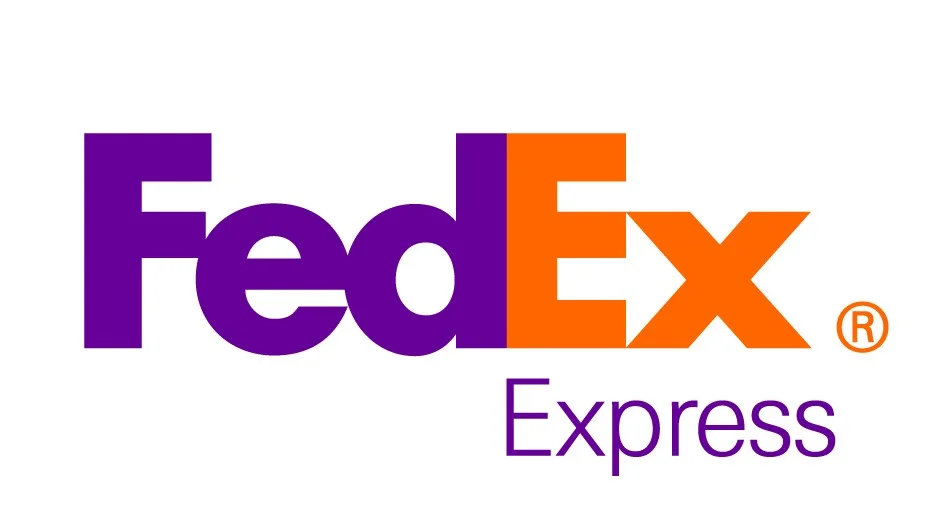
While technically airing in 1981, this commercial was filmed in 1980 and represents the culmination of late ’70s advertising trends that favored memorable gimmicks. Actor John Moschitta Jr., certified by the Guinness Book of World Records as the world’s fastest talker, delivered an incredible monologue at breakneck speed, playing both a business executive and his assistant coordinating complex logistics. His rapid-fire delivery perfectly illustrated Federal Express’s core benefit: when time is of the essence, FedEx is the solution.
The commercial became an instant sensation, making Moschitta a celebrity and launching a trend of fast-talking spokespeople in advertising. The genius of the spot was how the form perfectly matched the content—the dizzying speed of the dialogue demonstrated exactly what FedEx was selling: efficiency and time-saving. While the commercial itself contains too much text to transcribe here, its impact was so significant that many Americans can still picture Moschitta’s split-screen performance and recall his breathless delivery style. The “Fast-Talking Man” campaign helped establish Federal Express as the premium choice for urgent shipping, creating a brand association with speed that has persisted through decades of logistics industry changes.
9. Charmin’s “Please Don’t Squeeze the Charmin” (1970s)
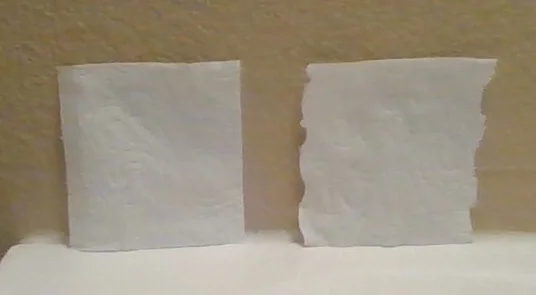
Fictional supermarket manager Mr. Whipple (played by actor Dick Wilson) had one job: preventing customers from squeezing the Charmin toilet paper. “Ladies, please don’t squeeze the Charmin!” he would plead, only to be caught indulging in a furtive squeeze himself when no one was looking. This campaign, which began in the 1960s, reached its peak popularity in the 1970s, with Mr. Whipple becoming one of the most recognizable characters in advertising history, appearing in more than 500 commercials over 21 years.
The genius of the campaign was its simple premise: if Charmin is so squeezably soft that people can’t resist touching it, it must be gentler than other brands. The commercials created a playful forbidden fruit scenario—being told not to squeeze the product only made consumers want to squeeze it more. Wilson became so synonymous with the brand that a 1978 survey found Mr. Whipple was recognized by more Americans than the President, and the catchphrase became part of the cultural lexicon, often parodied in comedy shows and everyday conversation. Though Procter & Gamble eventually retired the character in 1985 (briefly bringing him back for special campaigns), Mr. Whipple’s battle against Charmin-squeezers remains one of advertising’s most successful and enduring campaigns.
10. Xerox’s “Monks” Commercial (1976)
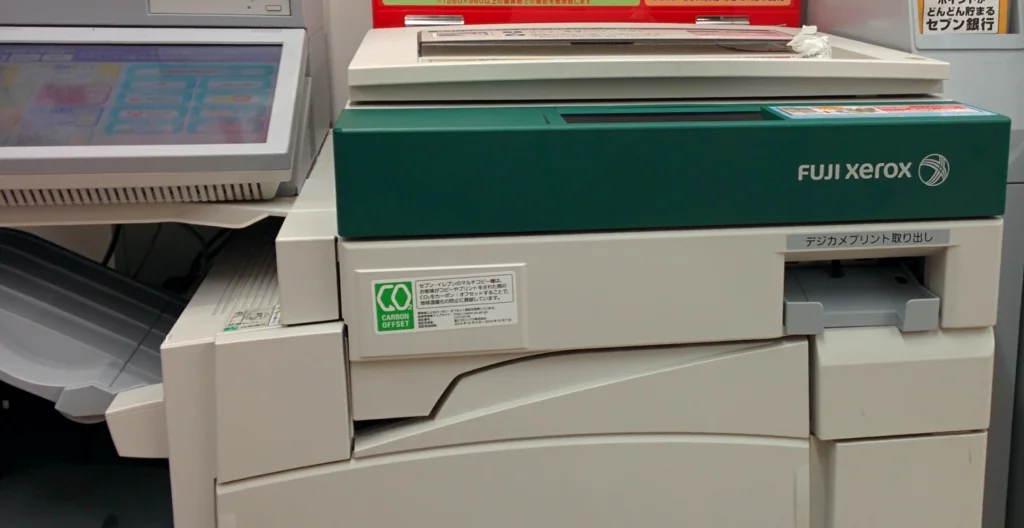
A harried monk is tasked with making 500 copies of a manuscript, causing him to despair until Brother Dominic discovers a Xerox machine that completes the task in minutes. When he returns with the copies, the abbot declares “It’s a miracle!” in this brilliant commercial that debuted during Super Bowl X. The spot perfectly dramatized Xerox’s benefit—the seemingly miraculous speed and quality of its copies—through a charming historical contrast that viewers couldn’t forget.
Created by advertising legend Allen Kay, the commercial was particularly effective because it used humor and historical juxtaposition to demonstrate a technological advancement without resorting to technical jargon or product specifications. The gentle humor, memorable character of Brother Dominic (played by Jack Eagle), and the perfect tagline—”It’s a miracle”—created an advertising classic that Xerox would reference for decades afterward. The commercial was so beloved that Xerox created a modern update for Super Bowl LI in 2017, bringing Brother Dominic into the digital age for a new generation—proof that truly great advertising concepts can transcend their original era and product specifications.
11. Bubble Yum’s “Little Soft One” (1977)
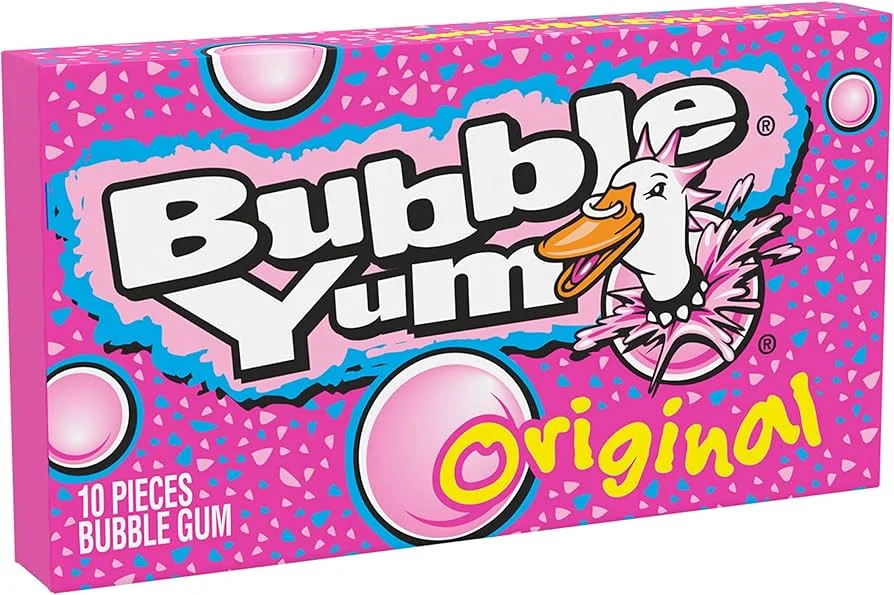
Before Bubble Yum, chewing gum required serious jaw work to achieve a good bubble. When this softer bubble gum hit the market in 1975, it revolutionized the category, and its 1977 commercials featuring the tagline “Bubble Yum, the little soft one” helped make it the most successful new product introduction in candy history at that time. The commercials showed amazed kids discovering they could blow enormous bubbles with minimal effort, accompanied by a catchy jingle that emphasized the product’s revolutionary softness.
The campaign had to overcome a bizarre challenge when playground rumors claimed the gum’s softness came from spider eggs or chemicals that would make one’s stomach explode—possibly the first viral product misinformation campaign of the modern era. Life Savers (the parent company) took the extraordinary step of taking out full-page newspaper ads to combat the rumors, and the advertising campaign continued to emphasize the fun and ease of blowing bubbles with Bubble Yum. The commercials’ bright colors, catchy music, and focus on the rebellious joy of bubble-blowing resonated perfectly with their young target audience, creating brand loyalty that many carried into adulthood.
12. Coca-Cola’s “I’d Like to Teach the World to Sing” (1971)
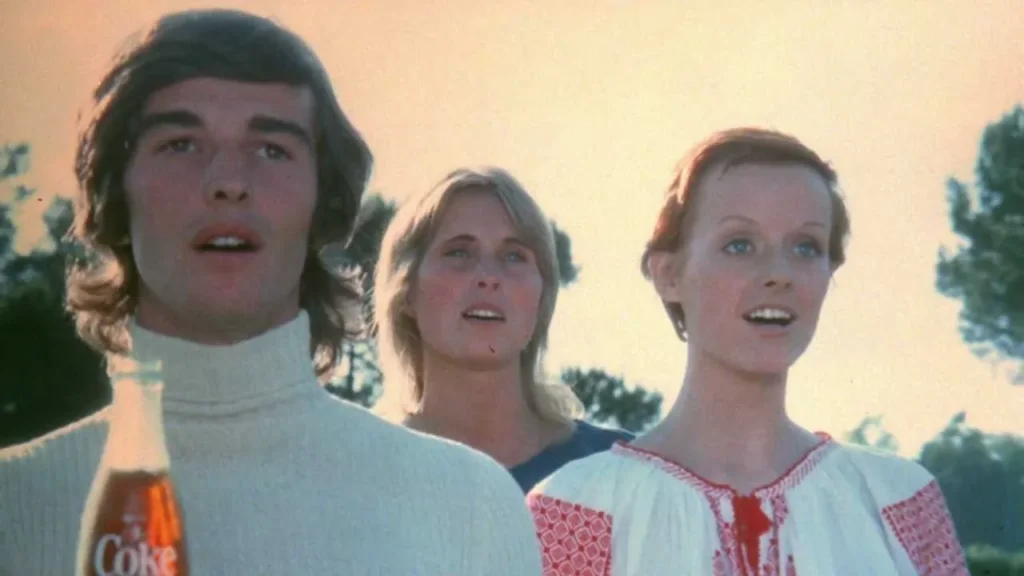
Perhaps the most iconic commercial of the decade began as a failed radio jingle that was reimagined as a peace anthem for a post-Woodstock generation. The television spot featured a multicultural collection of young people standing on an Italian hilltop, singing about buying the world a Coke and “keeping it company.” The utopian vision of global harmony—centered around a soft drink—perfectly captured both the idealism of the early 1970s and Coca-Cola’s ambition to position itself as a universal product that could transcend cultural boundaries.
The commercial was so popular that the song was re-recorded without the Coca-Cola references and released as a single by both The New Seekers and The Hillside Singers, reaching the Top 10 on the Billboard charts. The campaign’s impact was so lasting that it was featured in the series finale of “Mad Men,” fictionally attributed to Don Draper’s moment of zen-like clarity. The commercial’s enduring power comes from its genuine emotional resonance—it didn’t just sell a product but offered a vision of what the world could be, with Coca-Cola positioned not just as a beverage but as a symbol of unity and understanding. Over fifty years later, it remains the gold standard of emotional advertising that transcends its commercial purpose to become a cultural touchstone.
These twelve commercials represent more than just successful advertising campaigns—they’ve become part of America’s shared cultural memory, with jingles, catchphrases, and images that continue to resonate decades after they first aired. In an era before digital recording and streaming, these commercials had to make an immediate impact, and they succeeded so thoroughly that they’ve outlived many of the television programs they interrupted. While today’s fragmented media landscape makes it difficult for any advertisement to achieve this level of cultural penetration, these classics remind us of a time when a great commercial could become a national conversation piece—bringing Americans together through the shared experience of watching television and the collective memory of these unforgettable moments in advertising history.


